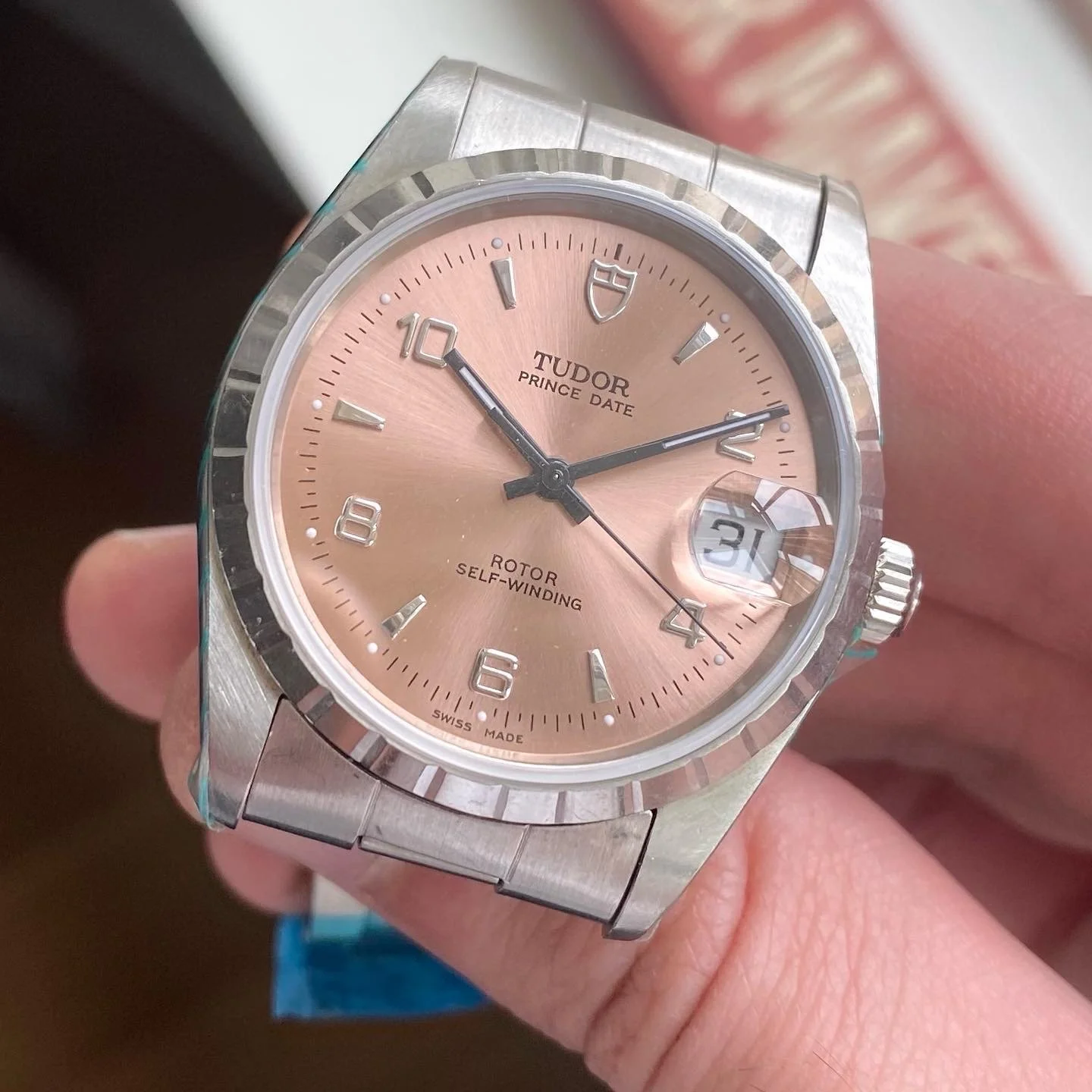The Beauty in Rolex Salmon Dials
A detailed look at one of the most unique dial variants found throughout the neo-vintage Rolex catalog: Salmon dials!
It’s no secret - the popularity of neo-vintage timepieces are on the rise, and for good reason.
Today, however, I’m not here to discuss the merits in this sect of collecting. Instead, I’m going to pinpoint a very specific, slightly unknown yet beautiful dial variant to come out of this era - the Rolex salmon dials.
Perhaps you're like me, and discovered this dial variant by accident. While surfing for an entry level Rolex learned how these quirky pink dials were in fact not aftermarket, but a staple to the 1990s Rolex catalog.
Still, in my eyes, these dials deserve the spotlight. Through our discussion of history, examples, and market appeal, we hope to highlight the importance of these salmon dials posing the question - do they have a place in your watch box?
History and Specific Examples
While the salmon dial has been a part of the Rolex catalog since the Bubbleback days, we are choosing to focus on the more ‘mainstream’ examples produced primarily throughout the 1990s. In definition, these neo-vintage options are a mixture of pink and copper tones with a vibrant sunburst effect. There are instances of Rolex dials from this era having patinated silver dials that mimic the salmon tone, so it’s important to distinguish between the two.
Our friends DVW and Vookum have quite a stellar example of this patinated ‘ salmon dial’
Most commonly, the neo-vintage salmon dials were housed in the Oyster Perpetual, Datejust, and Air King lines. It’s a safe bet to assume most examples of the Rolex salmon dial during this era were 34mm watches. This speaks to how special a good condition Datejust can be with this configuration.
A very clean example of a smooth bezel Datejust reference 16200 with thick lugs / Credit: DVW
When you research these pieces even more, you’ll discover they all have a similar neo-vintage ‘design’ language. Although this is difficult to articulate, the watches appear as a blending of vintage and contemporary Rolex features. For example, bold applied Arabic numerals adorn the dials which are housed in slim cases more akin to what you’d expect with a traditional vintage Rolex.
Tudor
Tudor is just as relevant to the salmon dial conversation. While slightly less known, Tudor daringly stuck these dials into their Submariner line. While this is a move I could hardly imagine Rolex pulling, sometimes I believe the crown acts out through the shield.
If the Submariners are a little too ‘out there’ for your taste, then you’d be pleased to discover that the Oyster Prince line also dabbled in salmon dials. Take the 14000 reference for example - a timeless Oyster design with the benefits of ‘modern’ construction (not 2022 modern, but still sapphire crystal modern).
Notice the dial similarities between the Rolex examples and this Tudor 74000
Interestingly, these Tudor dials are of the same tone as their Rolex counterparts. While there are obvious differences in their physical construction (think movement), the Rolex OPs and Air Kings share virtually the same dials as their Tudor cousins.
Market Appeal and Outlook (Daniel Matatov or @vintagewatchfam’s take)
Before collectors (and even non-collectors alike) started noticing details such as dial variations and patina, the concept of a ‘more desirable’ dial color didn't exist. In the 1970s, it was common to simply pick a dial from an assortment of trays at Rolex authorized dealerships. The market was very different in the era when Rolex owners didn’t consider collectibility, rarity, or even resale value as the primary motivation behind their purchase. Generally, Rolex was about owning an everyday, reliable watch. Today, though, this is clearly not the case as the collecting masses have been paying a premium for nuances in Rolex configurations.
Watch collecting has always been rooted in individuality. As I’ve expressed before, these little wrist machines are an extension of our personality and interests. Because of this, unique pieces that differ from the norm will always be in the forefront of importance for collectors. These neo-vintage salmon dials do just that. Not to get side tracked (gets side tracked), but Rolex’s modern take on pink is a great alternative as well with their pastel pink OPs in both a 36mm and 41mm. Although they’re overpriced, they make for a great pink watch thats quite refreshing when compared to Rolex’s more sterile section of dial color. It’s not necessarily a salmon dial, but pink nevertheless.
Image of the reference 126000 Rolex OP 36mm “cotton candy” pink dial taken at an IWJG watch show / Credit: DVW
While featured in well-loved albeit common models, they are anything but ordinary. The combination of rarity and uniqueness begs the question of their historic ‘niche’ popularity.
An image of a classic 14000 reference that captures the salmon tone nicely / Credit: Lunar Oyster
I argue that these salmon dials are becoming increasingly relevant to the modern watch conversation. I’ve subtly noticed how unorthodox rarities are more in vogue than ever before. Think Domino’s Air Kings - a case study that proves the value in collectable quirky dials based on their promise of individuality. While not as extreme, the neo-vintage salmon dials are a part of the same conversation.
Because of this, I project an upward trend in their value and clout within the community sooner rather than later. With the continued rise of neo-vintage, I could easily see these dials becoming classics in their own right.






